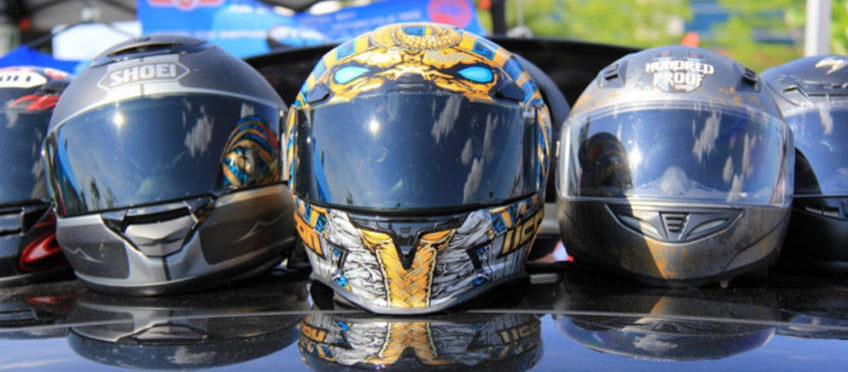Arriving at your destination safely requires a holistic approach to riding – one that considers all the factors that go into making the sport we love so exhilarating. It begins well before you throw a leg over your motorcycle.
Make sure you’re ready to ride by mindfully assessing the following factors:
Gear
We hope to never need it, but if we do, we want it to work. Purchasing durable apparel that fits properly and is abrasion resistant is only the first step.
Good gear offers more than crash protection. Outer layers keep you warm in cool weather and help cool you in the heat. Motorcycle apparel protects you from the elements – wind, ultraviolet radiation, and bugs. It helps keep you hydrated.
Make sure your gear fits properly. Our sizes can change, especially over the winter. Gear should fit snugly so it doesn’t flap or move around in the case of a slide. But if it’s too tight, it’s distracting, uncomfortable, and can impede your movement.
Wear or carry gear that’s appropriate for the weather you expect. Often this means layering. Check the integrity of each piece, looking for areas of wear and tear. Fading, fraying, cracks, and change in texture are all signs of ultraviolet degradation – and that it’s time for a replacement. This includes helmets, which have an effective life of approximately five years.
Motorcycle
You place a lot of trust in your motorcycle to keep you safe. Don’t take it for granted. As a minimum, conduct a quick scan and circle check before each ride, looking for fluid leaks, frayed wires and cables, and noting unexplained changes. Test your turn signals, brake lights with both front and rear controls, and headlights, including high beams.
Inspect your tires for uneven wear, cracks, bulges, and embedded objects. Check your tire pressure at least weekly. If there’s a sudden change, go the next step to find out why and correct the underlying condition. Topping up the air isn’t the ultimate solution if you’ve got a leak.
Periodically check the brake pads on both sides of your rotor for wear. On most bikes, it’s a simple visual inspection, although they can be awkward to see. A penlight helps.
Chain drives require routine adjustments and maintenance. Know the proper chain tension for your bike and keep it there, bearing in mind you’ll need to adjust it more often as it wears. Keeping it clean and well lubricated will prolong its life. Once the chain reaches the end of its adjustment or develops rigid sections, it’s time for a new one. While you’re inspecting it, check the teeth on the rear sprocket for wear.
Skills
Be honest and evaluate whether you have the skills for the riding you plan to do. They don’t come naturally. Rather, they develop through proficient instruction, practice, more practice, and saddle time. It’s natural to have to push our comfort zone appropriately to advance our skills. But don’t put yourself in a situation, like heavy traffic, technical curves, or high speeds, if you don’t have the skills to be there. You’re putting yourself and others around you in danger.
Practice routinely. This is especially relevant after an absence from riding, like in the spring. Skills rust when they’re not used. Find a vacant parking lot, take a friend and perform quick, controlled braking and cornering. You’ll refresh those skills and develop the muscle memory to execute them effectively when they’re called for on the road.
Consider the bike you’re riding and whether it’s appropriate for your skill level. This is especially true for new riders who get talked into purchasing a bike they can grow into.
No matter how empowered you feel while riding, confidence is no substitute for skill.
You
Your gear, motorcycle, and skills might all be in top form, but physical, emotional, and mental conditions can still call for putting the brakes on your ride.
Motorcycling is demanding and requires all your faculties. Not feeling well, dehydration, underlying medical conditions, and fatigue can dull your senses, extend your reaction time, and reduce your stamina. So will alcohol and some medications – either prescription or over-the-counter. You may have the skills but if you’re down on coordination and strength, may not be able to pull them off. Feeling stressed or emotionally upset diverts your energy from riding, even before dealing with aggressive drivers and other rigors of the road.
When you set out for your ride, you don’t know what the day is going to bring. Make sure you have a clear mind to make quick decisions, a healthy body that can respond and maneuver your motorcycle effectively, and a pleasant frame of mind to enjoy the ride.
Enjoying motorcycling starts by making sure you’re ready to ride. Be realistic and truthful as you assess your gear, bike, and especially your self. Once you’ve confirmed all is ready, then get out, remain aware, and have fun!








join the conversation